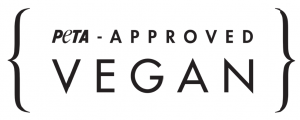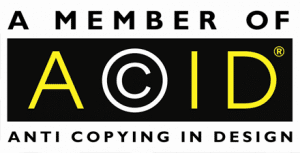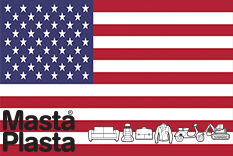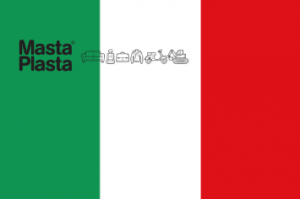It’s generally only when you need to clean or mend your leather sofa that you realise that you are not really sure what kind of leather it is. And looking at the receipt – if you kept it -probably won’t help. Every furniture store has a tonne of names for its leather ranges that mean nothing outside of that shop and won’t help you know how to treat it.
The next thing you will probably do is Google “types of leather”: maybe it will even lead you straight here! If not, you will find a whole lot of information out there but even once you have closely studied and researched leather types and the manufacturing processes, it still won’t help you know what you are sitting on. I’m going to try to keep it simple.
So No 1 of leathers is aniline – it’s the most expensive anyhow. Basically it is named after the dye – aniline dyes are waxy and transparent and are used on the top surface of the hide. Yes – hides are split into at least two layers, with the lower layers also being happily used to produce “genuine leather” goods, although it’s unlikely the label will explain you are getting the bottom half.
People argue that only the finest hides can be used with aniline dyes – hence the premium price. But that is debatable. My all-time favourite aniline hide was a chunky buffalo hide we used – it showed lots of scars, textures and even branding marks and that’s why I loved it. In fact I’m sitting on a sofa we made out of it right now and it’s just so cool. At 15 years old, it’s also 5 years above the average age at which sofas find themselves headed to the landfill, whether they be made of leather or fabric.
In my opinion, the most perfect aniline hides can look as anonymous as the “corrected hides” that follow it down through the leather heirarchy. This is where a “printed” grain is applied on top using polymer coatings to give it that bland (my personal opinion again), homogenous finish. The difference here is that if your aniline looks bland to start with, it should lose that with age – a patina will develop with wear. The story of a spilled cocktail will forever be told upon its surface and your favourite spot will smile at you from a distance.
People are over-protective of aniline because these clear dyes provide no protection for the leather. However, the point of it is to age. If something spills, just use a damp cloth (wetted with water only). It will look frightening at first as the leather will darken where you wet it. But it will dry, and then the excess of the spillage will be cleaned up and your leather sofa has just got a bit more character.
So is your sofa made of aniline leather? Rub your fingernail gently along a hidden bit of the leather. It should leave a superficial rough scratch. Then just rub that scratch – the waxes and oils in the leather should make it disappear. If you do this to a corrected leather, chances are no scratch will appear (i am talking a gentle scratch rather than the kind of thing that passes off for fun at an S&M parlour…)
Actually I need to mention something else here. It may be worth daring to do your scratch-test a bit less discreetly. That corner of the sofa where you’ve just scratched might not be aniline even if your receipt clearly says it’s an aniline leather. Often, the obvious bits can be full aniline leathers, and then split leather hides will be used on the side or back panels. This leather-matching can also frequently involve faux leathers, in both the car and furniture industry. It is almost standard practice. If you have checked out our Peta-accredited patches, you will know we are fans of faux leather – but it’s not the same if you think you are buying one thing and getting another. I think I will save the story of why we ditched the cowhides for vegan leather for another blog – but I will just say here that when you have handled a lot of hides it can suddenly turn a bit creepy. And when you handle some of the beautiful vegan alternatives (not the cheap vinyls!), you begin to wonder why you need to start cutting up hides again.
Anyway, back to leather sofas! The further you move away from aniline leather, the more you move away from the real surface of the hide and the more processing involved – with heavier pigments used and thin polymer coatings added to apply a grain finish. What you get is a sun-resistant sofa that does not absorb spillages and withstands scratching.
Split leathers can be treated with these same non-aniline finishes – but this kind of leather is when the lower levels of the hides are used. Some split leathers will be coated with a thin polyurethane layer. This technique moved from the shoe industry into the furniture industry and was initially seen as a fabulous breakthrough in providing good-looking leathergoods at cheaper prices. These “bycast” hides have a lovely polished vintage look and are in widespread use – if your sofa was really good value and has that polished finish this is probably what you have. Unfortunately some low-level producers just have to take advantage – they will mask thin, weak splits of hides using this technique and they are also probably what you are looking at if you see a sofa where the surface is peeling.
It is still a far cry from bonded leathers. These are pretty much the scrapings off the factory floor which are ground up by machine and stuck together with a thick layer of polyurethane. The end product comes on a roll and is legally allowed to be as much as 83% polyurethane. It is often designed for the kind of market where the salespeople are not going to tell you that. But don’t panic if that’s what you’ve got. You bought it for a reason – or two: generally looks and price govern all our purchase decisions! So enjoy it and let’s ditch all furniture snobbery here!
The thing is with all this, the bottom line is, that whatever leather you are sitting on – a damp cloth is the best way to go for spillages. And never use normal leathercare products on aniline leathers. You need to look for a specialist aniline product, if you really need it.
And if you have a hole in your sofa, well there’s really only one sensible solution for that too – our MastaPlastas of course!
 Made in England. Patent No: GB2461518 | Registered Trademark N°012504205
Made in England. Patent No: GB2461518 | Registered Trademark N°012504205














